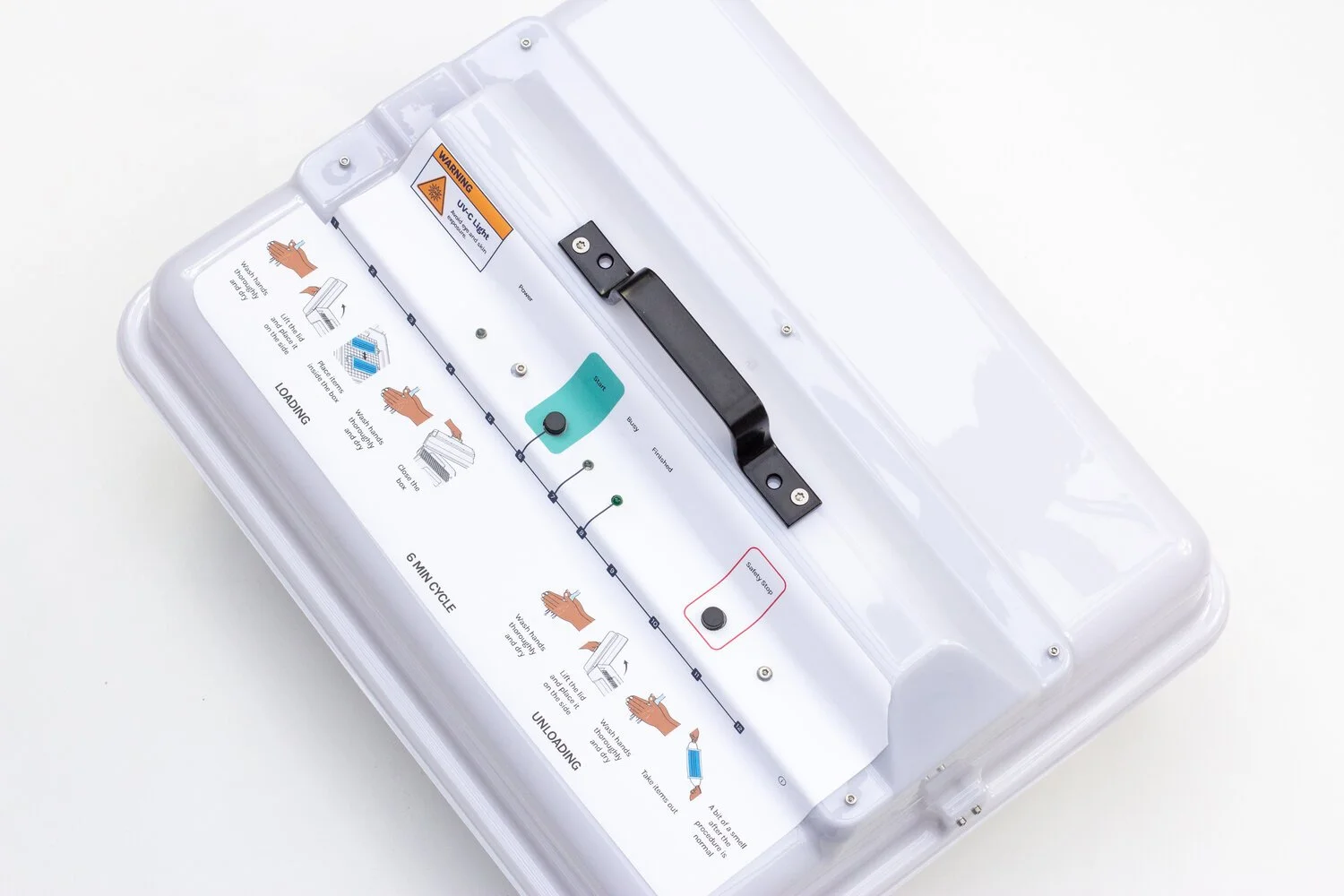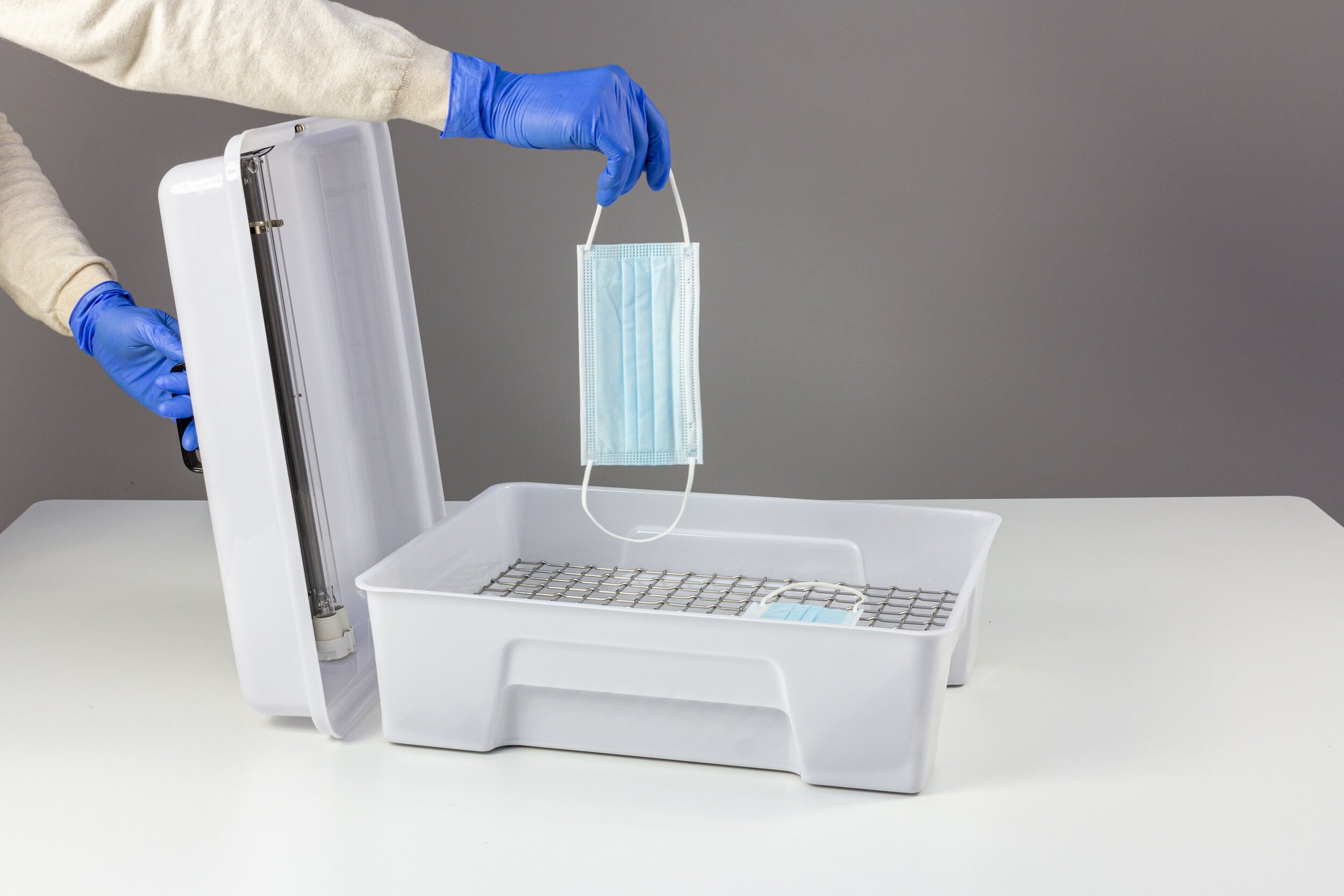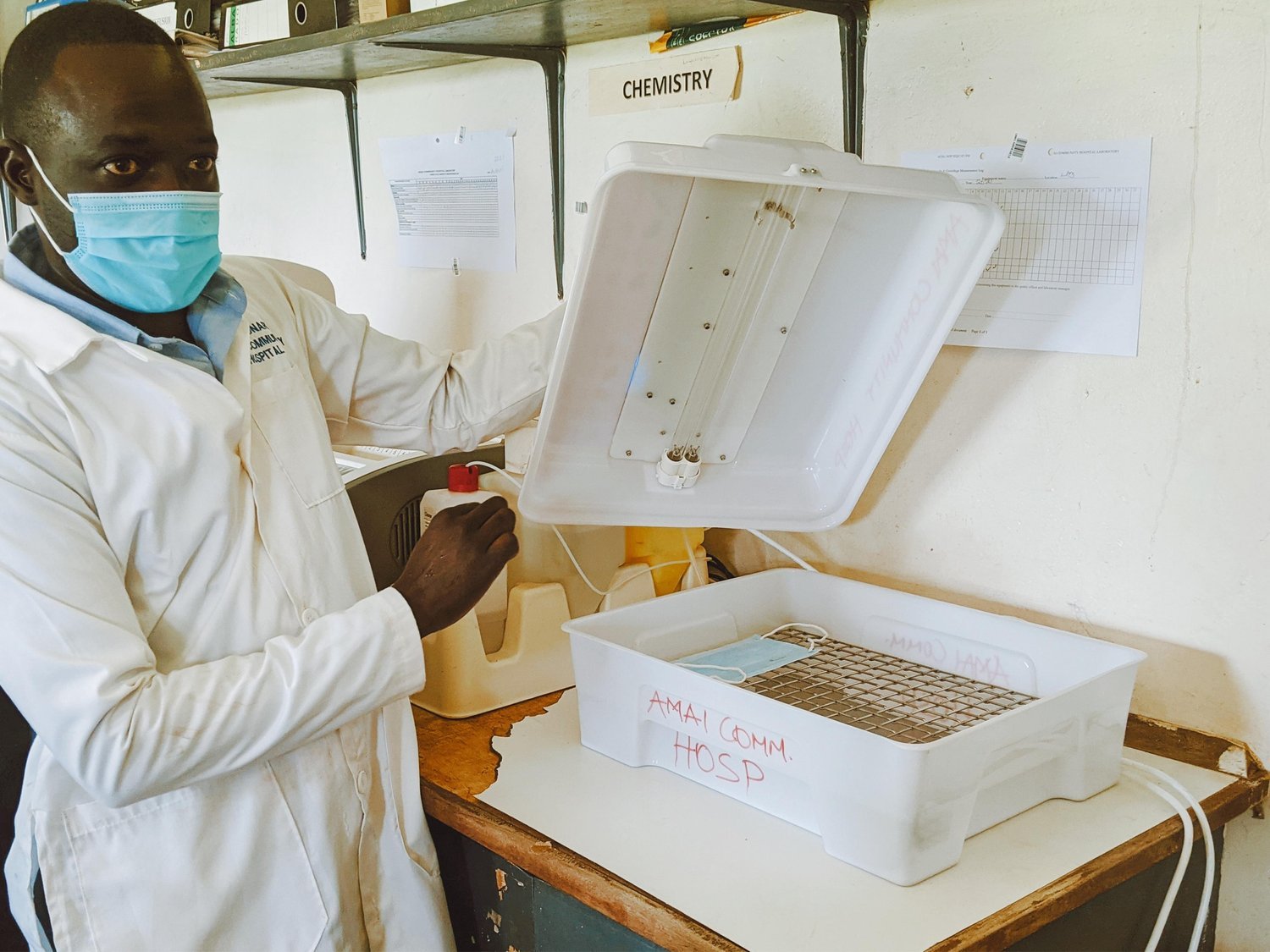SANDU UVC
A LOW COST PPE decontamination Solution
This was an in-house studio project funded by the Netherlands Government and run by FROLIC Studio while I was working there.
Team: Alexander Selg (Industrial Designer), Ismael Velo Feijoo (Product Design Lead)
My role: Design Research Lead, UX and UI Design
Opportunity
During the pandemic in 2020, FROLIC Studio decided to channel its resources and network into finding ways to help overcome the critical challenges posed by COVID-19. After an initial open source prototype being generated based largely on European insights, a new, improved and low-cost version of the decontamination box has was developed for healthcare workers in emerging markets.
How can we provide a low-cost decontamination solution for emerging markets?
RESULT
A low cost, portable and adaptable decontamination device that is inclusive to different users and contexts. With a protocol integrated into the guiding them through the procedure for safe and efficient decontamination.
INTRODUCING SANDU UVC
Sandu UVC is a low-cost decontamination device that disinfects PPE by removing all traces of different viruses and bacteria—including COVID-19—using the process of Ultra-Violet Germicidal Irradiation. By using the device, the lifecycles of PPE can be increased, saving on resources, particularly for healthcare facilities with budget constraints.
InCLUSIVE Interface
The Sandu UVC protocol is integrated into the interface using simple visuals, and takes users through the decontamination process, step by step, which make it easy and accessible to use for different users, ensuring safe and effective use.
The instructions are applied to the hardware is a simple sticker which can be changed cheaply and easily if needed.
HOW We GOT There
Research Goals
We began with an in-depth analysis of different care facilities in Uganda, allowing us to explore the reality of health practitioners at ground level while keeping human-centred design principles in mind. The aim was to understand how COVID-19 affected these frontline professionals, how the use of protective equipment had changed, and what they needed in order to better contain the spread of the virus.
Insights
The two main takeaways from our research were:
A general shortage of PPE means staff were already used to recycling PPE as part of their internal systems.
Different languages, levels of literacy and workflows call for an adaptable design that can be understood visually, accessible interface that can be understood without having to read English.
Usability testing in and Amsterdam Hospital during lockdown
DECONSTRUCTING EUROCENTRIC ASSUMPTIONS
Because of lockdown restrictions, our initial challenge was to carry out research in Uganda remotely. While we were able to carry out some basic usability testing in the Netherlands, it was vital for us to collaborate with local research partners and clinics in Uganda for a first-hand understanding of the context and people were designing for. We wanted to ensure we challenged any assumptions in order to gain unbiased insights and guide our design decisions.
Once lockdown had eased, the team were able to get a pilot version of the box out to healthcare centres and carry out research with people on the ground. From identifying power demands to understanding the hygiene protocols, the research and design process was carried out with and for the Ugandan medical community.








